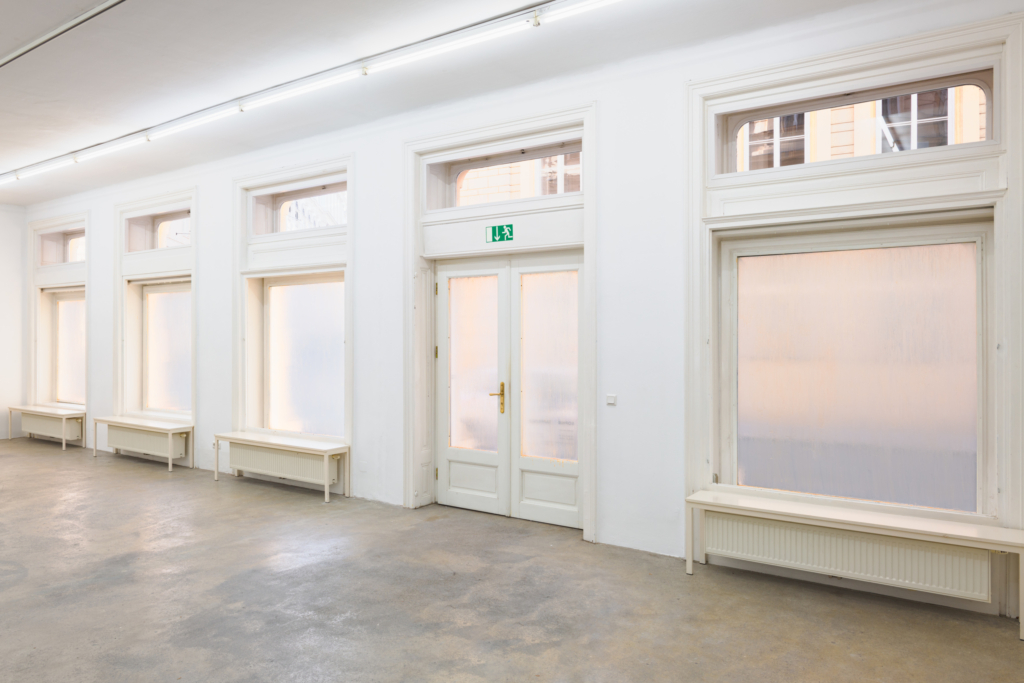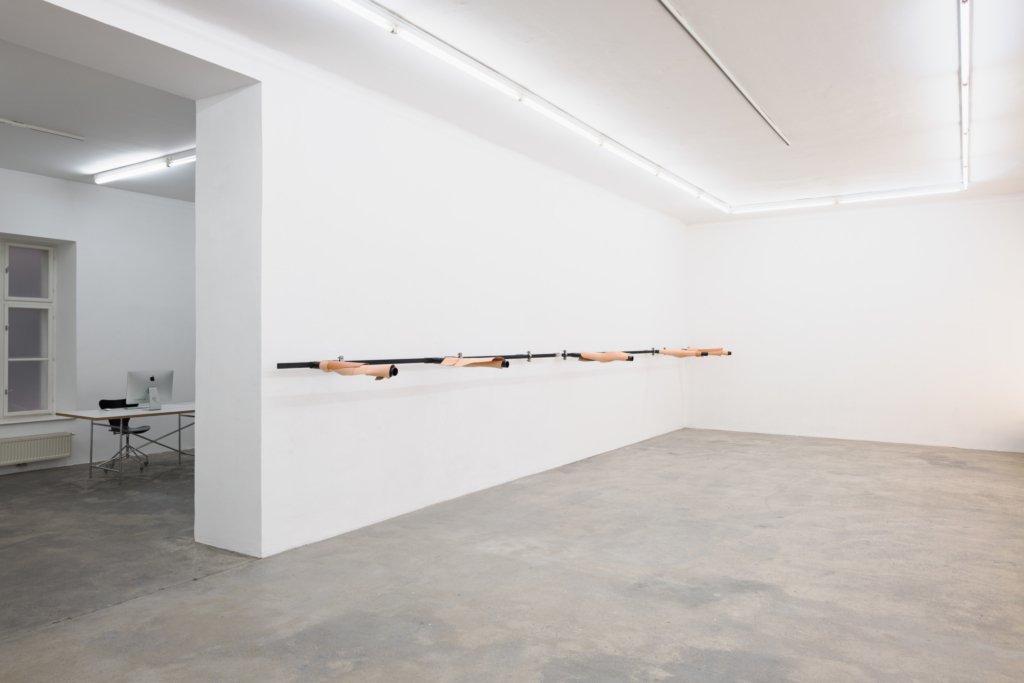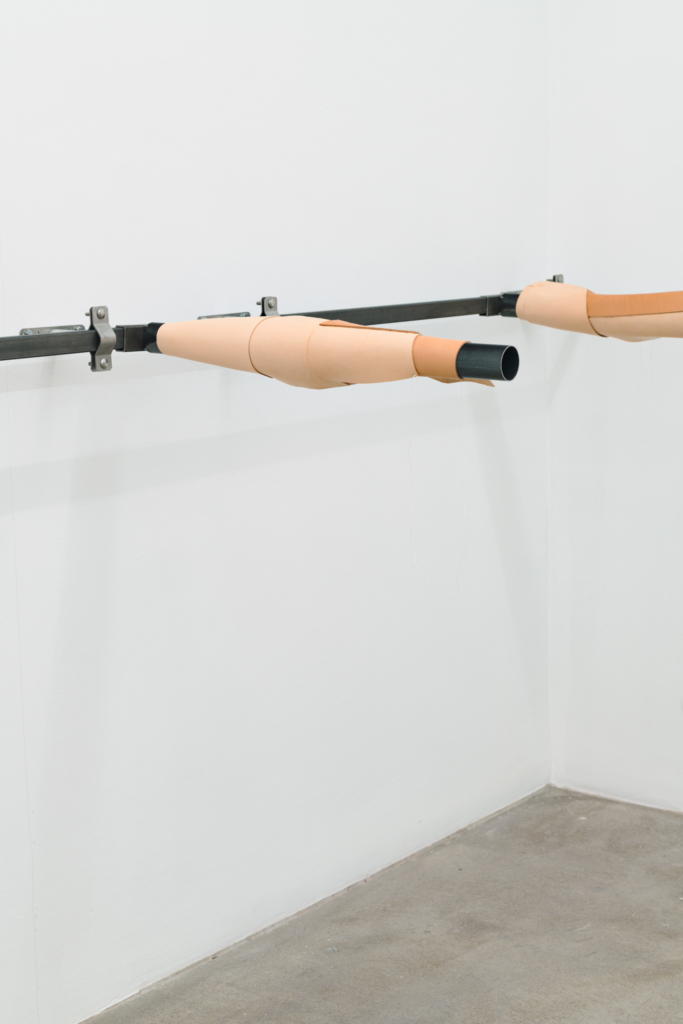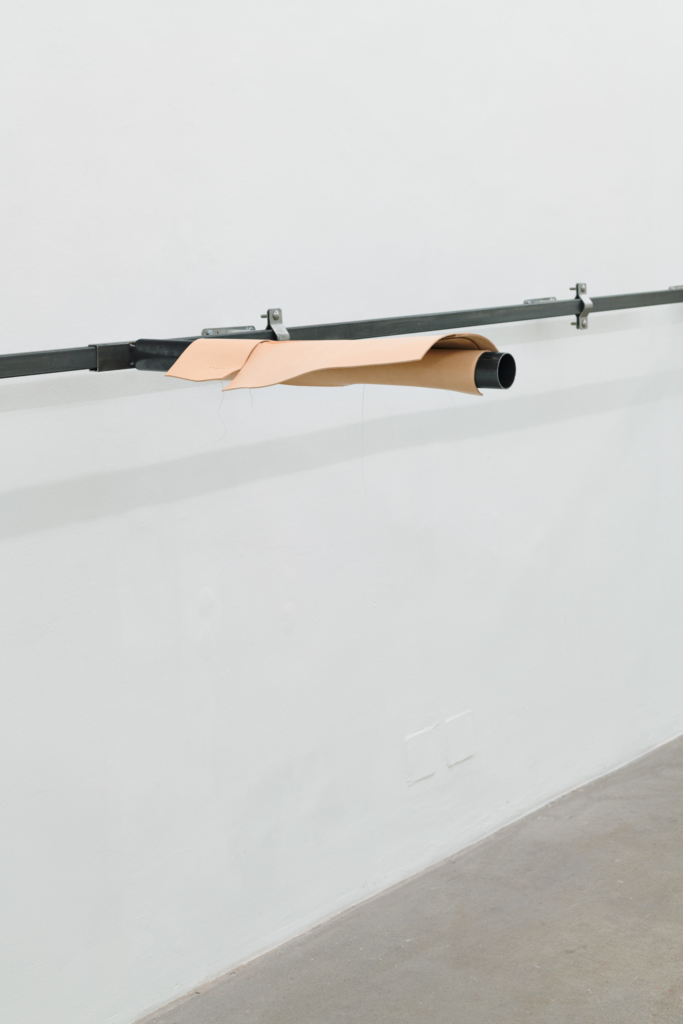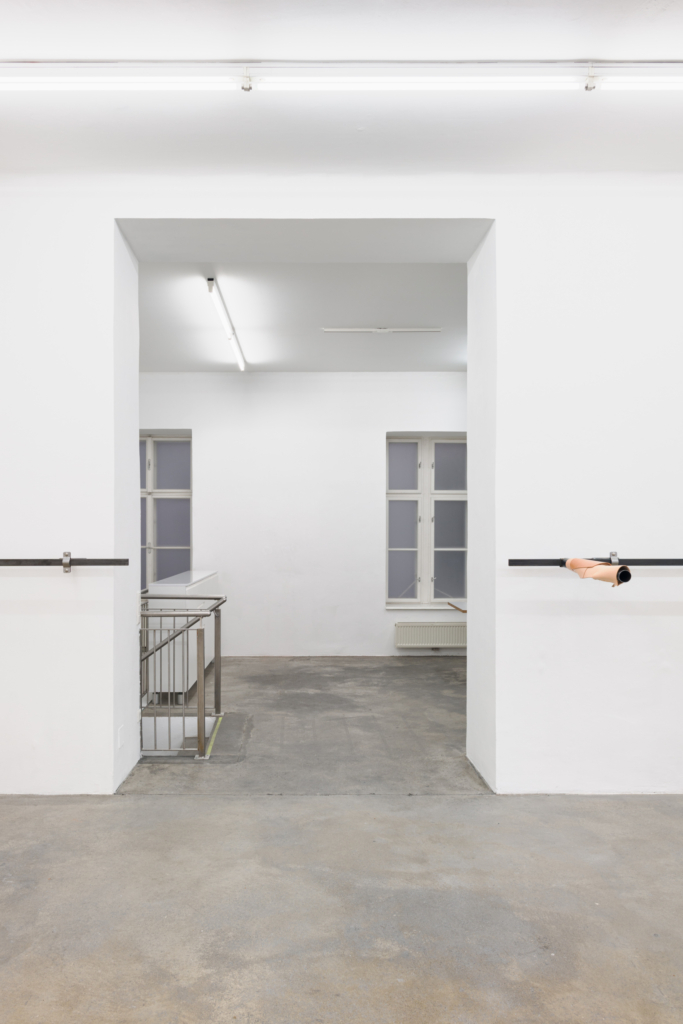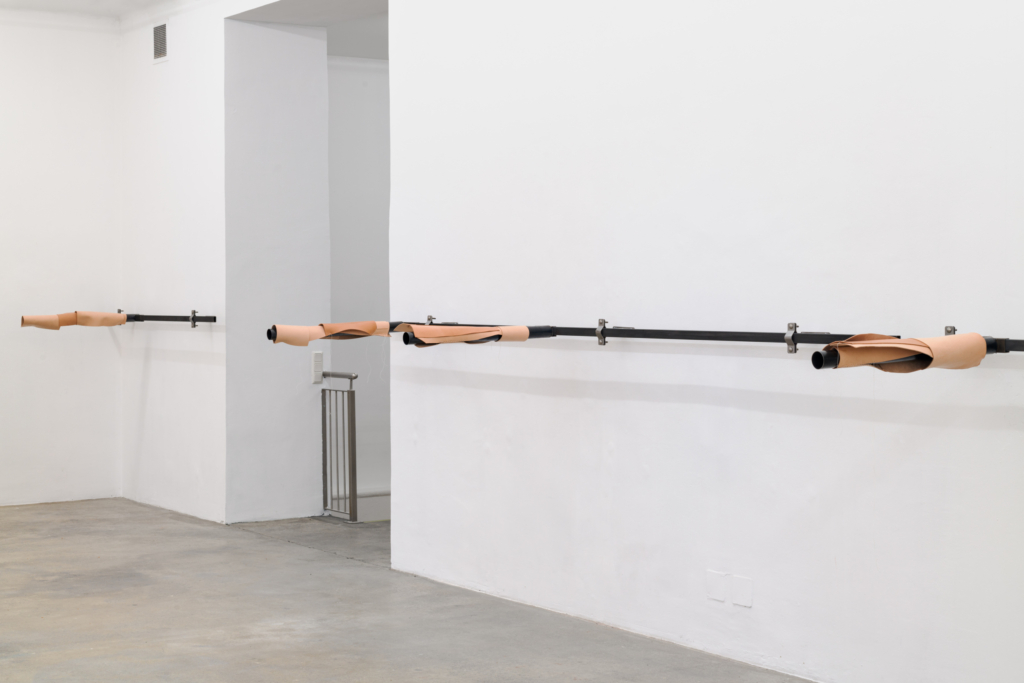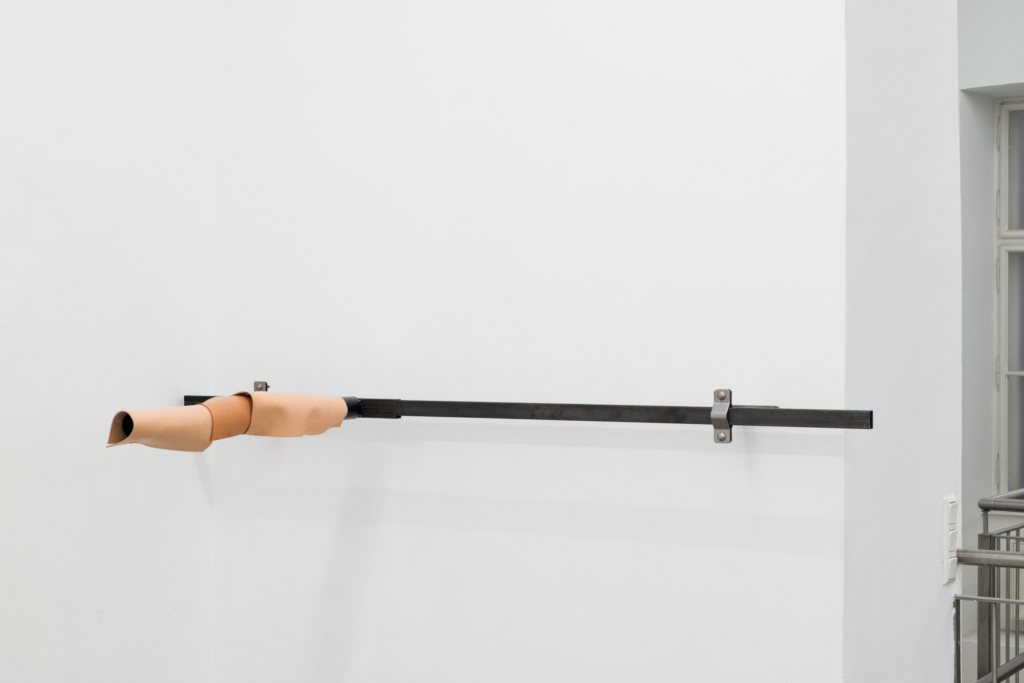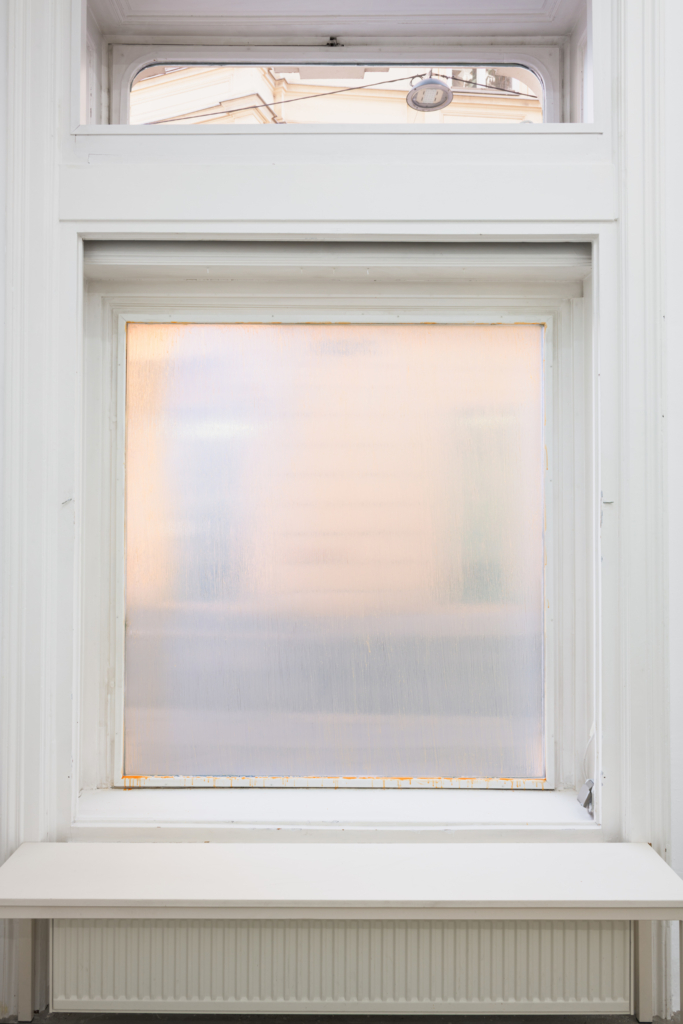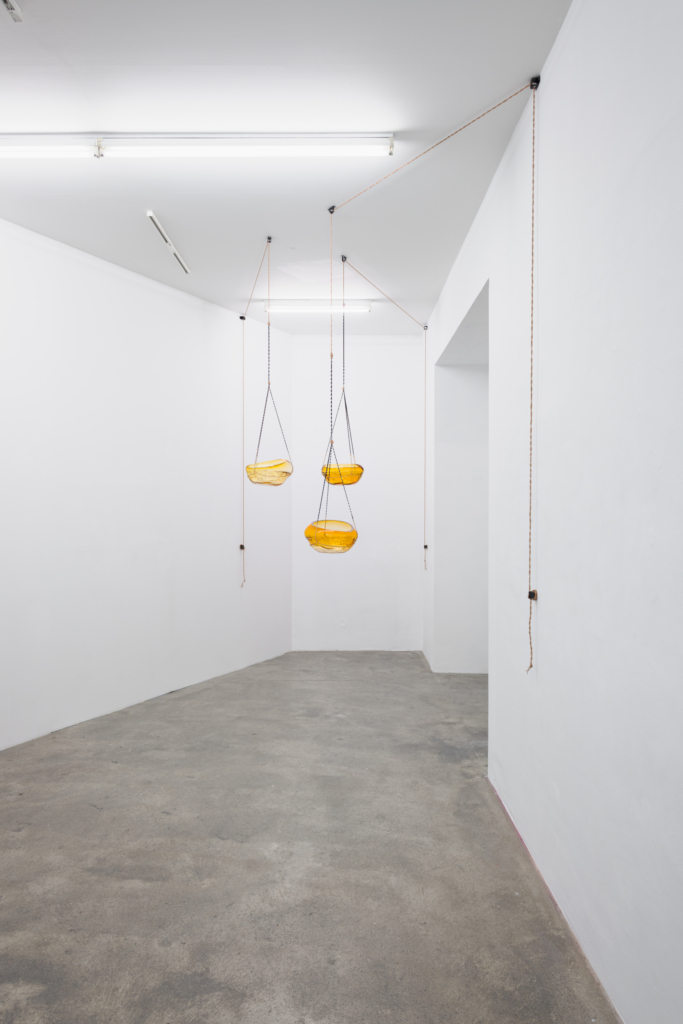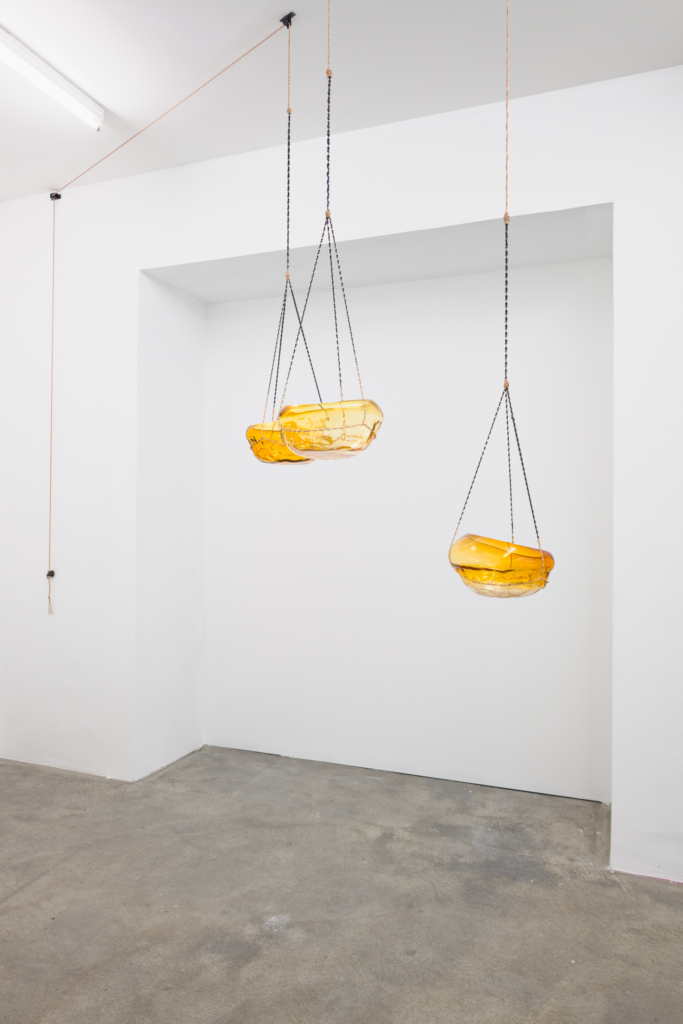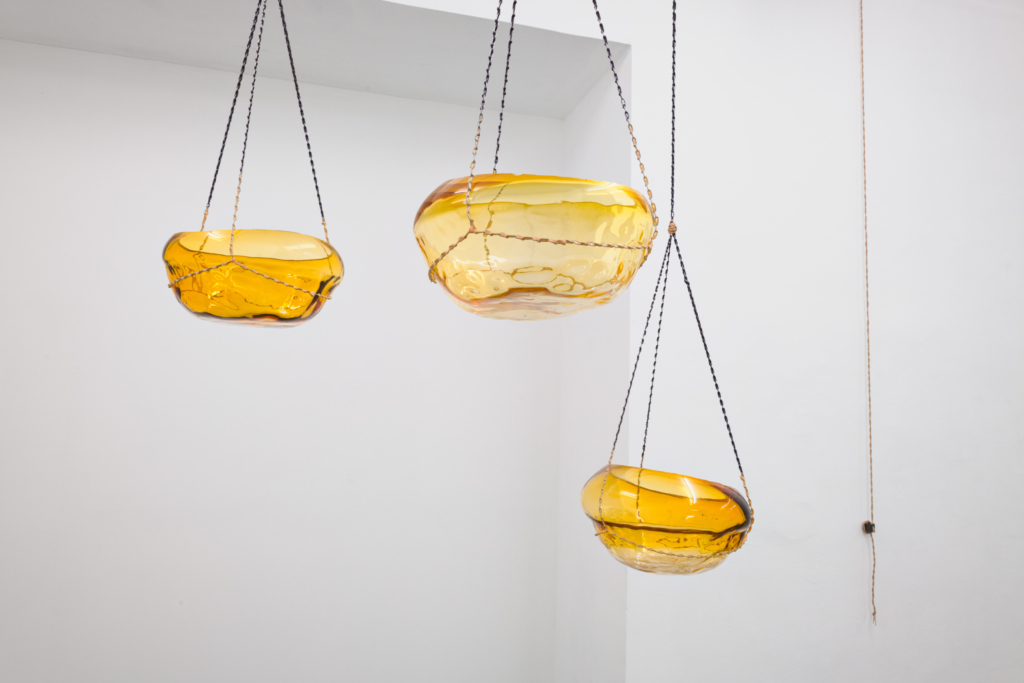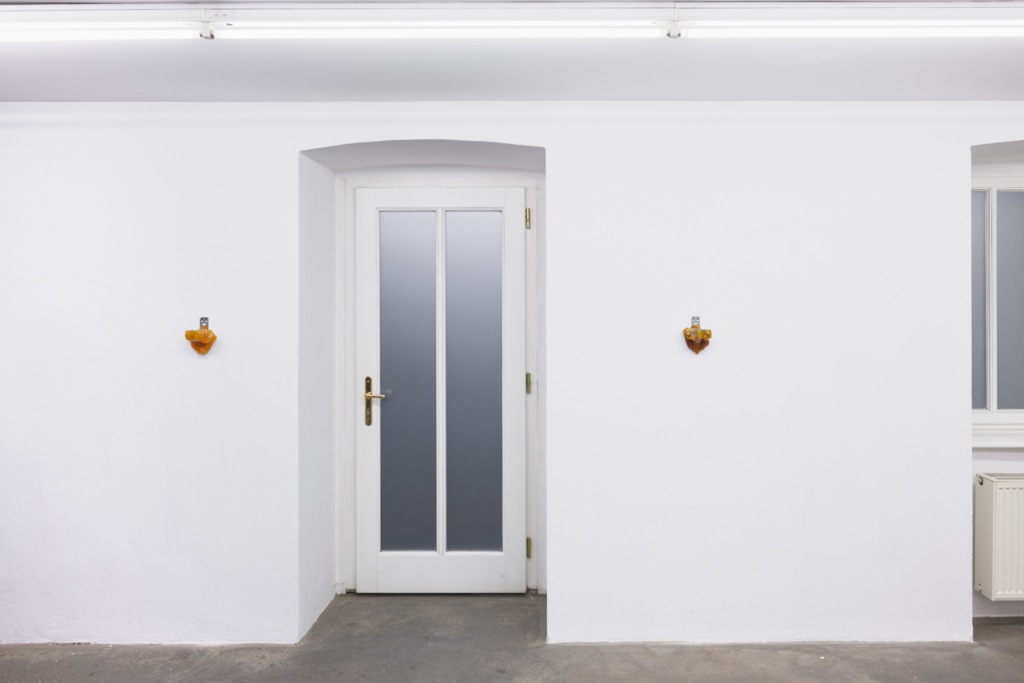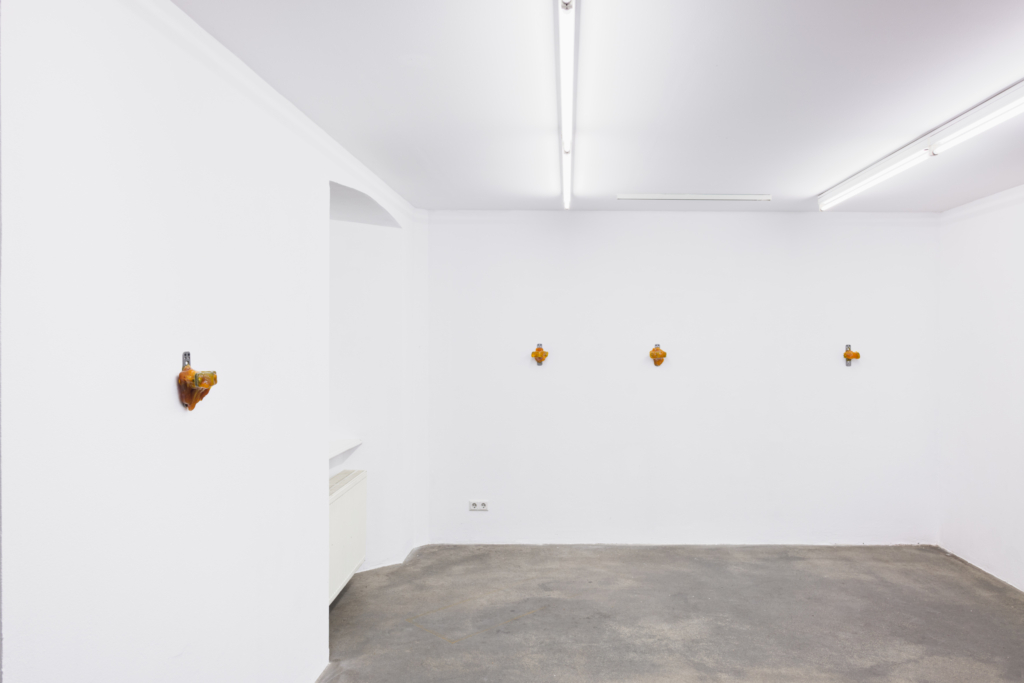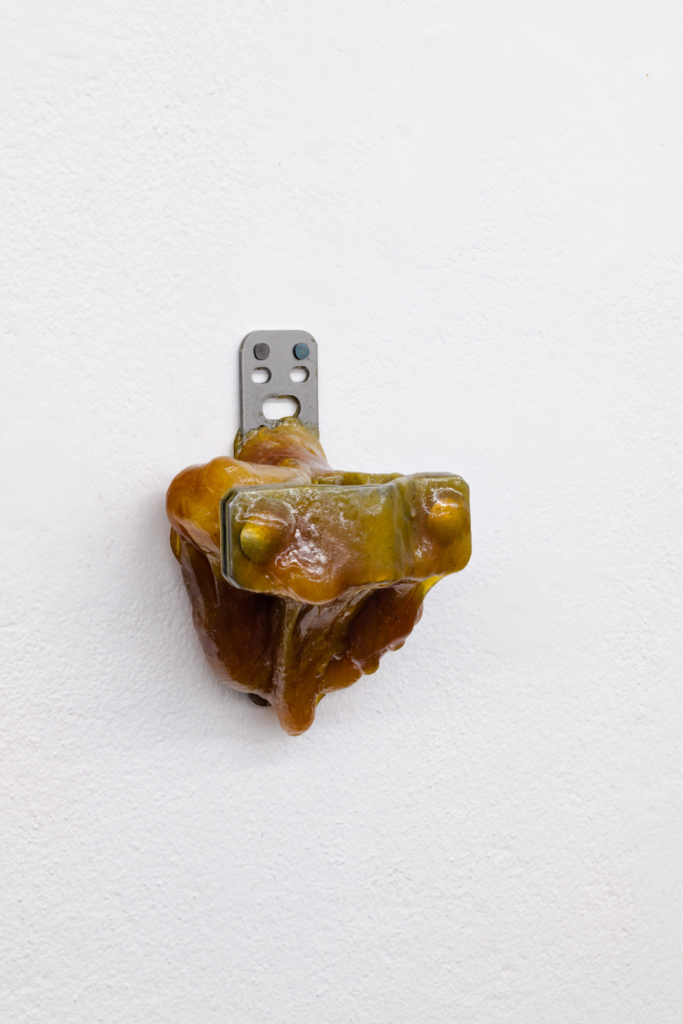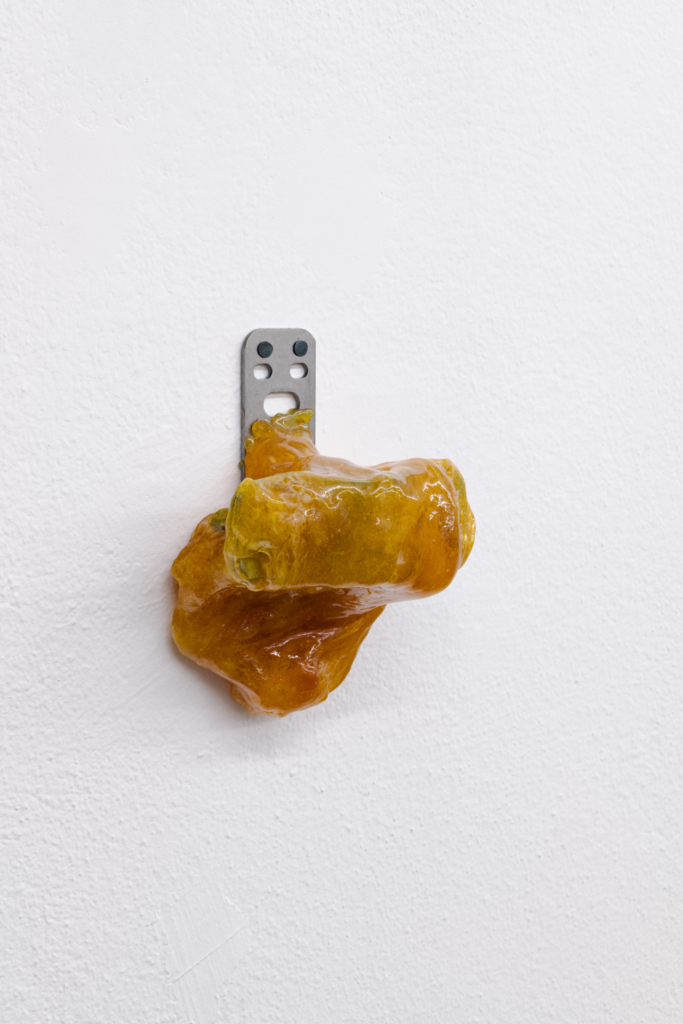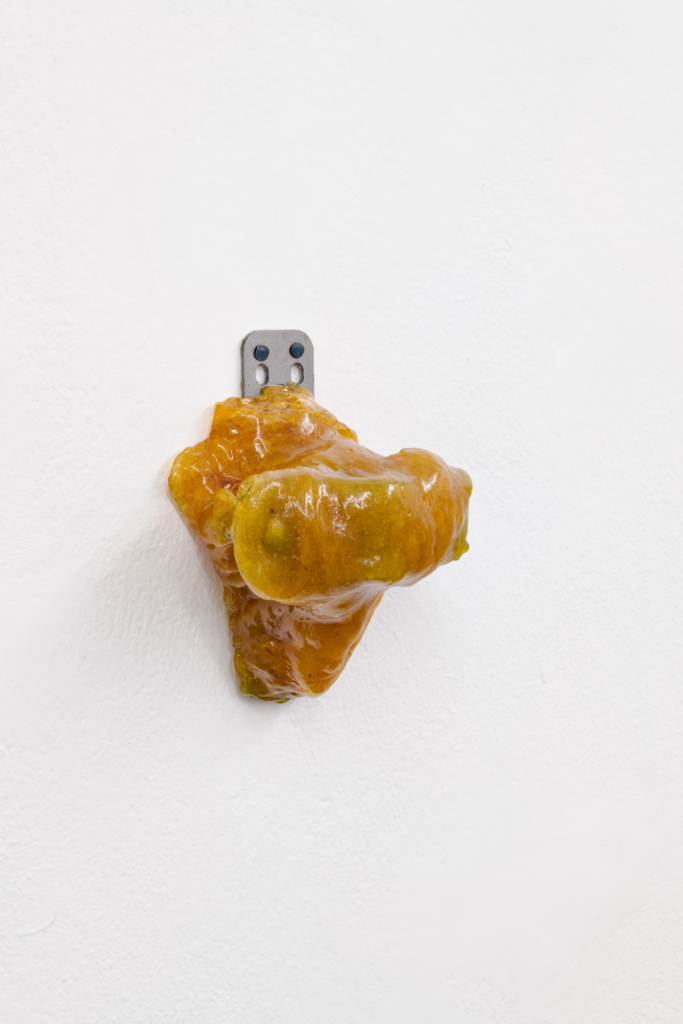covered gathers multiple series of gestural coverings and inclusive propositions. It roams between the multiplicity of meanings associated with (to) cover and unfolds through the application of one material to, over, in, on, or through another. In these acts of delicately layered and affectionate shelter, a visual language that captures moments of transition carefully materializes. They are the outcome of shifts in states of matter, as much as they bear the intention to alter the state of heart and mind, too.
Spanning the hues between amber and brown, Raff’s works invoke a sense of dependability, reliability, and safety. The psychology of color is insistent: endowed with a resemblance to earth and organic materials, shades of brown produce within its beholder a sense of belonging—a chromatic reminiscence of the soothing motility of organisms, minerals, and fluids. But more than a colorful reference to the caressing and supportive powers of the natural realm, covered gathers works that operate as carriers, sleeves, bowls, holders, and filters—the tools, means, and tropes of protection.
A sequence of cold black metal bars upholds six leather sculptures [Sleeve 1 – 6]. Here, steel, invoking the language of industry and infrastructure, is wrapped in the skin of an other. Composed of patches of leather and sewn together with the lightest of threads, composite sleeves reach into the space. Suggestively, the arms of the bar are sheathed with a prosthetic simulation of musculature. Contrasting the register of cold and rigid mechanization with the unfinished and temperate nature of unprocessed leather, a multifaceted reading emerges: to hold and support [“I’ve got you covered”] and to be layered by another [“I want you to cover me”]. Leather, both soft and sturdy, both elastic and protective, turns that which seemingly doesn’t need protection into something vulnerable. Together they reveal a scene in which meeting unfolds as a cohabitation of one material disarming the other.
Nest 1-3 reverses this dramatization of materials meeting. Following Raff’s longstanding investigation into latex vessels, Nest 1-3 continues in this line through an almost adverse material: handblown glass. Stripped of their function, empty glass vessels, or nests, hang solemnly as they are supported by chains drenched in latex and epoxy resin, suspended by leather braids. Echoing the shape of a nest, a blown-up insect egg, a wicker basket, or a vintage glass fruit bowl, Nest 1-3 linger purposelessly. That which it is supposed to carry (a baby bird, some apples, a nascent creature, or soiled laundry) is no more, or about to come. Emptied out, literally, in the tantalizing anticipation or nostalgia of being filled, of covering one’s contents, yet all of it in the fragility of amber glass.
Bringing together the principles of carrying and covering, Keeper 1-5 are technical metal holders covered in a mass of colophony, a solid form of resin derived from pines and conifers. Drenched in blobs of amber, Keeper 1-5 reflects on physical principles of states of matter and degrees of hardness. Colophony crystals are heated up, poured, moulded, and cured. Returned to their solid state, they attain a heightened fragility—the slightest agitation provokes the piece to shatter, a reaction that contradicts its viscous appearance alltogether. Materially, they reverberate larger questions of the compelling traction between the organic and the inorganic and the apocryphal relationship they often mutually exert.
Applied on the inside of the gallery’s windows, Filter distorts the viewer’s vision with a thin layer of amber-colored latex. Here, latex, the protagonist of Raff’s earlier work, is reduced to its most gaunt expression. It is abstracted from its capacity to hold, wrap, and become mass. When covering the windows, the latex separates the outside from the inside, filtering light and fields of vision and transforming the exhibition space into a vessel in itself. Achieving its thinnest state, Filter sifts the apprehensions of clear vision and transparency as much as it refrains the exterior from seeping into the innards of the room. It propagates blurred and hindered ways of seeing and underscores that, ultimately, vision is composite, too.
Tom Engels
PRESS
